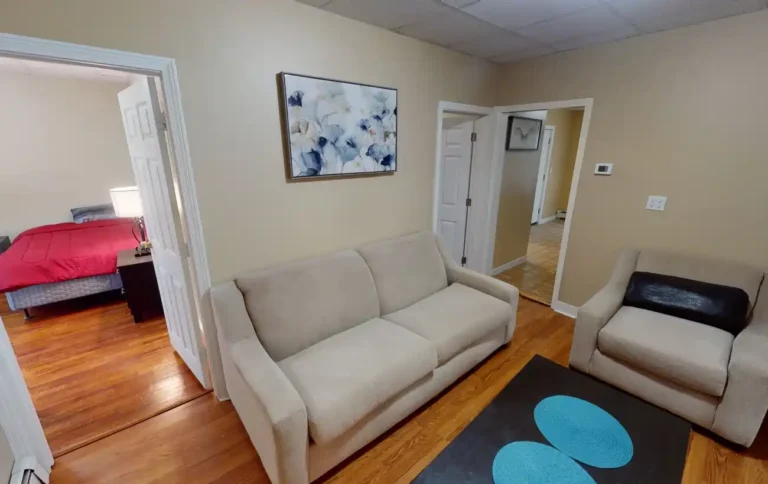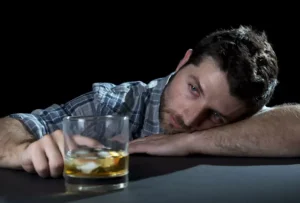
The question posed by Schwartz-Barcott and Kims (2000) guided the inquiry through the literature to provide an initial direction for this research (2). If there is a hitch https://ecosoberhouse.com/ in this picture of addiction it is that it is far from simple. It is also politically incorrect, unlikely to make the “Just Say No” and “law and order” crowd very happy.
- In contrast, for understanding the psychology of addiction and designing psychological interventions, behavioral science is the natural realm, but one that can often benefit from an understanding of the underlying neurobiology.
- However, the boundary for addiction is intentionally blurred to reflect that the dividing line for defining addiction within the category of SUD remains an open empirical question.
- Although the incentives almost doubled the number of continuing care sessions that were attended, substance use outcomes in the TMC plus incentives condition were slightly worse than those in TMC.
- Aftercare programs provide people in recovery with support, guidance, and community.
- It is not the only lens, and it does not have supremacy over other scientific approaches.
CONTINUING CARE STUDIES NOT INCLUDED IN PRIOR REVIEWS
For clinical purposes, those polygenic scores will of course not replace an understanding of the intricate web of biological and social factors that promote or prevent expression of addiction in an individual case; rather, they will add to it 49. Meanwhile, however, genome-wide association studies in addiction have already provided important information. For instance, they have established that the genetic underpinnings of alcohol addiction only partially overlap with those for alcohol consumption, underscoring the genetic distinction between pathological and nonpathological drinking behaviors 50. These data suggest that commonly used diagnostic criteria alone are simply over-inclusive for a reliable, clinically meaningful diagnosis of addiction. They do identify a core group of treatment seeking individuals with a reliable diagnosis, but, if applied to nonclinical populations, also flag as “cases” a considerable halo of individuals for whom the diagnostic categorization is unreliable.
- County administrators are still considering additional program components to include in the recovery center.
- Whatever the stress relief that comes from being in a group, many others are not comfortable with the religiosity, the steady focus on the dangers of relapse rather than on growth, or the subscription to powerlessness of AA and NA.
- A good relapse prevention plan specifies a person’s triggers for drug use, lists several coping skills to deploy, and lists people to call on for immediate support, along with their contact information.
- Completing formal treatment is only the beginning of the recovery journey.
Box 1 What’s in a name? Differentiating hazardous use, substance use disorder, and addiction
- The Diagnostic and Statistical Manual of Mental Disorders (DSM) avoids the terms addiction and recovery.
- Rather, they have a range of other features designed to support recovery, such as self-monitoring, information on dealing with high-risk situations, tools for relaxation or distraction, and ways of connecting with peers or treatment providers.
- A professor of psychology and psychiatry and director of the Center on Alcoholism, Substance Abuse, and Addictions at the University of New Mexico, his controversial studies of “controlled drinking” in the early 1970s were among the first to dash with the “disease” theory of addictions.
- Some examples of setbacks are not setting healthy boundaries, not asking for help, not avoiding high-risk situations, and not practicing self-care.
They are not occasion for blame or despair but for encouraging resumption of recovery. Families can develop awareness of a loved one’s emotional, environmental, and social triggers of substance use and manage those. Because of the way addiction changes the brain, one of the best ways to help when loving someone with an addiction is to provide frequent feedback and encouragement, planning small immediate rewards every day for any positive changes. Studies show that families that participate in treatment programs increase the likelihood of a loved one staying in treatment and maintaining gains.
Find People

Accordingly, we do not maintain that a chronic relapsing course is a defining feature of SUD. When present in a patient, however, such as course is of clinical significance, because it identifies a need for long-term disease management 2, rather than expectations of a recovery that may not be within the individual’s reach 39. From a conceptual standpoint, however, a chronic relapsing course is neither necessary nor implied in a view that addiction is a brain disease. Human neuroscience documents restoration of functioning after abstinence 40, 41 and reveals predictors of clinical success 42. If anything, this evidence suggests a need to increase efforts devoted to neuroscientific research on addiction recovery 40, 43. Much of the critique targeted at the conceptualization of addiction as a brain disease focuses on its original assertion that addiction is a chronic and relapsing condition.
Millions of Americans are apparently “hooked,” not only on heroin, morphine, amphetamines, tranquilizers, and cocaine, but also nicotine, caffeine, sugar, steroids, work, theft, gambling, exercise, and even love and sex. In the early 1990s, the United States spent $45 billion waging it, with no end in sight, despite every kind of addiction treatment from psychosurgery, psychoanalysis, psychedelics, and self-help to acupuncture, group confrontation, family therapy, hypnosis, meditation, education and tough love. Recovery coaches do not have personal experience with SUDs or recovery, but have professional training to provide needed support.
In the absence of triggers, or cues, cravings are on a pathway to extinction soon after quitting. But some triggers can’t be avoided, and, further, the human brain, with its magnificent powers of association and thinking, can generate its own. • Identity—shifting towards a new, positive view of oneself, one more aligned with one’s deeper values and goals, one built on self-confidence gained by acquiring new skills and new behaviors. • Connection—being in touch with others who believe in and support recovery, and actively seeking help from others who have experienced similar difficulties.
What Is Addiction Recovery?

Any meaningful discussion of remission rates needs to take this into account, and specify which of these two populations that is being discussed. Cognitive therapy is one of the main tools for changing people’s negative thinking and developing healthy coping skills 9,10. The effectiveness of cognitive therapy in relapse prevention has been confirmed in numerous studies 11.
- One troubling question is whether this pattern — multiple relapses leading to eventual recovery — will continue now that more street drugs are contaminated with the deadly synthetic opioid fentanyl.
- Deputy County Administrator of Benton County Matt Rasmussen said the recovery center has been in the planning stages for over two decades.
- The researchers in the first group, including physicians, SUD (substance use disorder) experts, medical centers, and medical circles, define recovery as a process involving clinical diagnosis, treatment, and rehabilitation (5).
View Options
It helps them to know that there is usually only a small percent of their lives that needs to be changed. It can also be assuring to know that most people have the same problems and need to make sober living blog similar changes. Clinical experience has shown that common causes of relapse in this stage are poor self-care and not going to self-help groups.

The fact that significant numbers of individuals exhibit a chronic relapsing course does not negate that even larger numbers of individuals with SUD according to current diagnostic criteria do not. For instance, in many countries, the highest prevalence of substance use problems is found among young adults, aged 18–25 36, and a majority of these ‘age out’ of excessive substance use 37. It is also well documented that many individuals with SUD achieve longstanding remission, in many cases without any formal treatment (see e.g., 27, 30, 38). It is not trivial to delineate the exact category of harmful substance use for which a label such as addiction is warranted (See Box 1). Challenges to diagnostic categorization are not unique to addiction, however.
To promote patient access to treatments, scientists needed to argue that there is a biological basis beneath the challenging behaviors of individuals suffering from addiction. The view that substance addiction is a brain disease, although widely accepted in the neuroscience community, has become subject to acerbic criticism in recent years. These criticisms state that the brain disease view is deterministic, fails to account for heterogeneity in remission and recovery, places too much emphasis on a compulsive dimension of addiction, and that a specific neural signature of addiction has not been identified. We acknowledge that some of these criticisms have merit, but assert that the foundational premise that addiction has a neurobiological basis is fundamentally sound. We also emphasize that denying that addiction is a brain disease is a harmful standpoint since it contributes to reducing access to healthcare and treatment, the consequences of which are catastrophic. Here, we therefore address these criticisms, and in doing so provide a contemporary update of the brain disease view of addiction.
- By: saqartvelo
- 0 comment